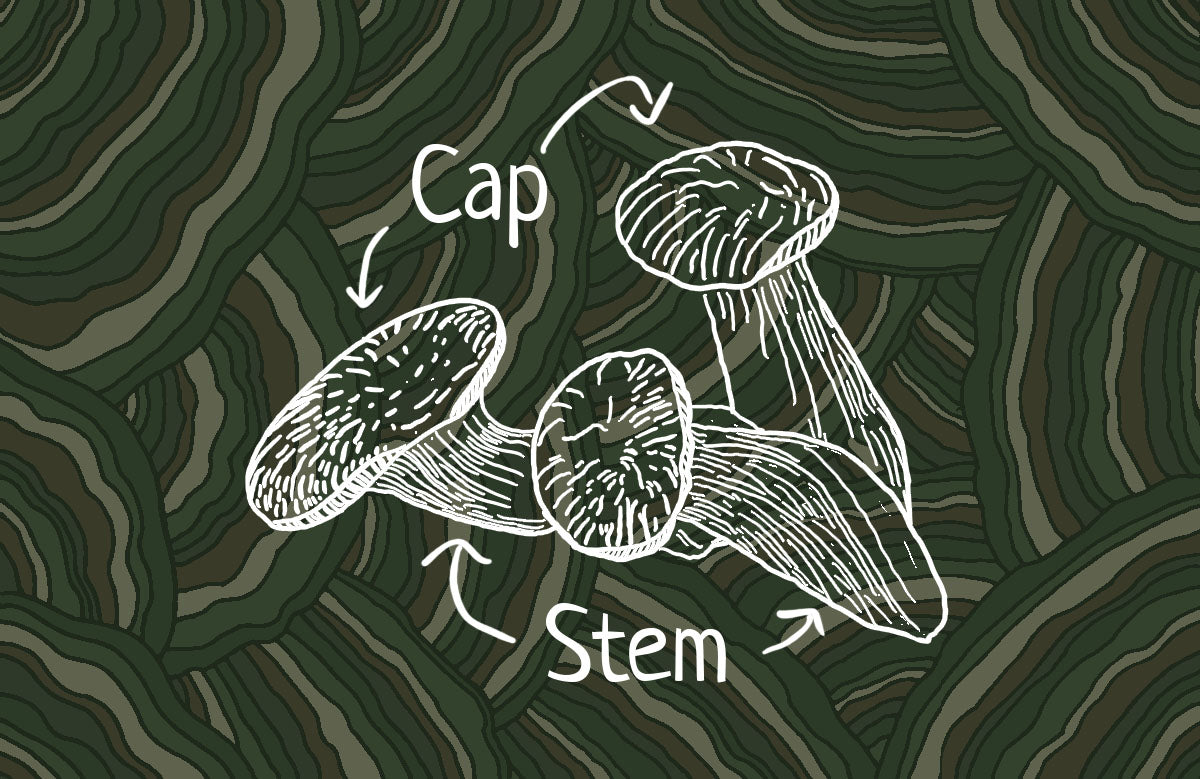We all love to eat gourmet mushrooms, but have you ever really stopped to think about what they are and how they’re grown? They’re not quite a plant, but not an animal either…so where do they fit in?
Mushrooms are unique to the human diet because they’re a fungus, and they also happen to be the only type of fungus most of us eat. Fungi are distinct from plants because they do not possess chlorophyll, the green pigment that allows plants to create sugar from the sun's energy. They need to absorb their food from the environment in which they live. As you’ll see later on, mushrooms have developed a fascinating process for absorbing these nutrients – in some cases, enough to fuel acres-wide structures.

The Mushroom’s Just the Tip of the Iceberg
A mushroom may seem impressive above ground, but it’s even more magical under the soil. What we call the mushroom (the part we eat) is actually the “fruit” of the fungi. Its primary intention is to spread mushroom spores at the end of the mushroom’s life cycle, so new mushrooms will start to grow nearby.
But underground, this fungus is sending out a group of mycelium – thin fibers similar to the roots of a plant – to find nutrients. Sometimes these fibers go on for miles, and they can remain dormant underground for many seasons. Eventually each individual fiber, called a hyphae, will break through the surface of the forest. Then it will develop into the structure we normally think of as the mushroom: the edible cap and stem (also called a stalk). At the end of this growing season, the mushroom will release spores that are capable of turning into their own mycelium.
A Bit About Spores
The spore of a mushroom contains all of the necessary materials to form a new fungus. Once the spore has been released and is settled on the forest floor, it will begin sending out hyphae to help establish the fungus and gather food.
After the spore has sent out its hyphae, they will eventually meet up with the hyphae of another mushroom. After the process of reproduction has begun, the mushroom forms the structures of a "fruiting body" that will eventually produce and disperse spores. The button stage is the early form of this fruiting body. What begins as a tiny button can grow into an impressive mushroom very quickly, with some appearing and disappearing overnight, or very slowly over the course of months.
Stems, Caps, and Gills
The mature fruiting body of the mushroom can have various structures. The toadstool mushroom that most of us picture contains a cap, stem, and gills. The cap normally houses the spore producing surface of the fruiting body, which can consist of gills (oyster mushrooms), pores (porcinis), ridges/false gills (chanterelles), or teeth (Lion’s Mane).
Many mushrooms produce spores on their gills (on the underside of the mushroom’s cap). These spores fall off the gills in a fine powder and may travel some distance due to wind or animals before landing. Then the life cycle of the mushroom begins again.
It’s interesting to note that the fruiting body only exists for a short phase of the fungi’s overall lifespan. However, the mycelium of a mushroom can survive for an astonishingly long time. One colony of Armillaria solidipes in Malheur National Forest in Oregon is estimated to be at least 2,400 years old and spans over 2,000 acres!

Image Credit: The Mushroom Diary
Growing Gourmet Mushrooms for Food
When growing mushrooms, gourmet mushrooms sometimes take longer to develop than commercialized varieties. Button mushrooms and other common grocery store finds have been cultivated to have a shorter lifespan, so we can eat the fruiting body more quickly. The effort that goes into an organic gourmet mushroom means we sometimes have to wait a while to see fruiting bodies, even in a highly controlled growing environment.
Equipped with your new knowledge of the life cycle of a mushroom, you’ll enjoy eating gourmet, organic mushrooms more than ever before. R&R Cultivation mushrooms are available for purchase at Lunds and Byerlys and co-ops throughout the metro. We also sell our mushrooms at farmers markets all summer long!
Here’s where to buy our gourmet, organic, locally grown mushrooms.

